Continued from Section 4.2.4.2
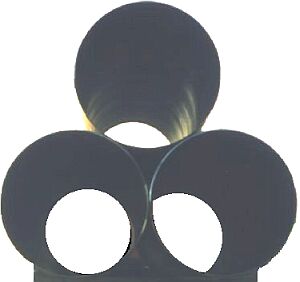
Pipes stowed using the bilge and cantline method
If sensitive cylindrical cargo is stowed using the bilge and cantline method, the load forces are transferred over two load-bearing lines onto the cylinders stowed below. The cylinders in the bottom layer only rest on one load-bearing line. If wooden dunnage or squared lumber is laid as floor dunnage, only load-bearing "dashes" are present for each cylinder, which can cause harmful load forces. Items stowed using the bilge and cantline method exert considerable forces on the layers below them as a result of their opening angle. Only precise stowage can minimize these forces.
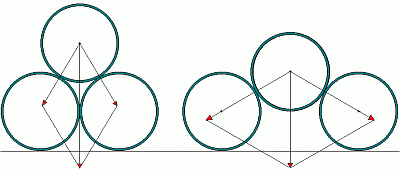
The lower a package lies in the gap, the greater the opening
angle and therefore the greater the forces transmitted
It should be remembered that at an opening angle of 120°, a package already exerts a force of double its weight on the underlying packages and at 151°, this force is even four times its weight. If packages of this type are in turn bearing heavy loads, they will exert extreme downward forces. On welded pipes, the welded joints should not lie on the contact lines between the pipes. If cargo items do not fit exactly into the vehicles, improper stowage can result in gaps being left between the goods, which results in large opening angles and resultant forces. If gaps cannot be avoided, they must be left on the outer sides and padded out accordingly.
If cylindrical goods are loaded with stowage gaps and stowed with the bilge and cantline method, a cargo item which protrudes low into the cantlines of the underlying layer could exert considerable lateral forces on the stanchions or other edges of the loading area. This would result in damage to the cargo and/or damage to the means of transport.
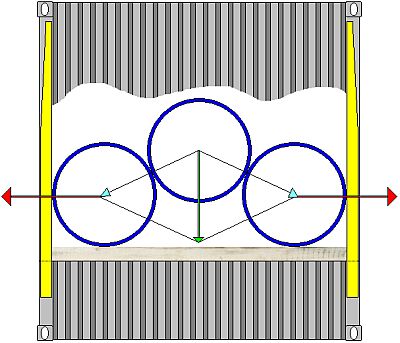
Load forces on other cargo and components of the
means of transport caused by the opening angle
The middle pipe exerts lateral forces (red) as a result of its opening angle, which are greater than its own weight (green).
With resilient cargo items and load-bearing walls of the means of transport, the forces generated by the opening angles can be used to secure the cargo. The best-known example is the locking coil. This method can be used on any type of cylindrical cargo item. This is a good securing method, as long as other cargo items are prevented from riding up elsewhere. If necessary, additional lashing must be used.
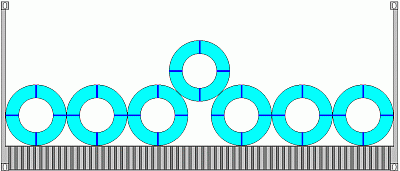 |
|
| Principle of the locking coil |
If the forces exerted by a cargo item are too great, they can damage other goods or components of the means of transport. The gaps should therefore be no greater than half the diameter of the cargo items. If all the items are of equal diameter, the locking element then protrudes by around a third of its diameter into the cantlines of the layer below.
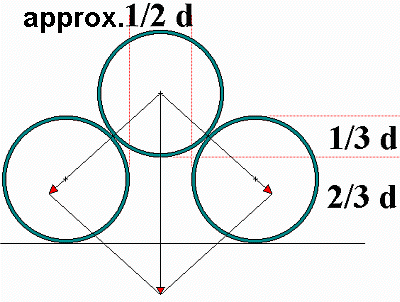 |
|
| Maximum protrusion for goods stowed with the bilge and cantline method |
Other goods can also be stowed using the bilge and cantline method, e.g. bagged cargo, more robust paperboard cartons etc. Using this stowage method, the seams or edges in all layers will lie in parallel. The packages of the vertical tiers are connected to each other, but not to the packages of adjacent tiers.
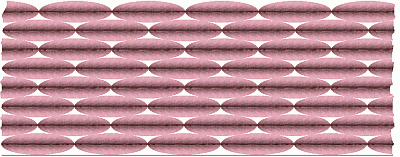 |
|
| Bags stowed longitudinally with the bilge and cantline method |
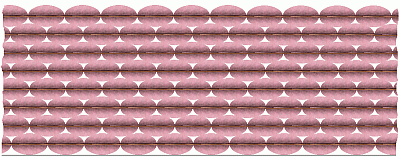 |
|
| Bags stowed laterally with the bilge and cantline method |
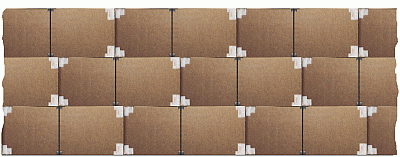 |
|
| Cartons stowed with the bilge and cantline method |
In a cross-tie stow, packages are stowed alternately longitudinally and transversely. In this way, they are firmly interconnected:
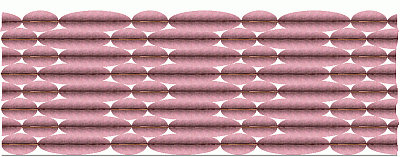 |
|
| Example of cross-tie stowage of bags |
Full cross-tie stowage enables goods to be completely connected to adjacent tiers: Cargo items in one tier extend half-way into the adjacent layer. Full cross-tie stowage can be recognized by the fact that no continuous lines can be seen either longitudinally or transversely. If cargo items have different dimensions, the stow must be arranged in such a way that cargo items which are as flat, long and stable as possible loaded in the outermost tier with the long side pointing into the stack.
If bagged cargo is loaded in such a way that free-standing tiers remain at the edges, the seams or closures should point into the stacks, as they are weak points of the packaging. If this is not observed, bags can "bleed", which in turn endangers the stability of the stack.
The following illustrations show partial cross-tie stowage, since continuous lines can be discerned in each case. Only the individual blocks are interconnected within themselves. By inserting anchors here, they can be connected to adjacent blocks.
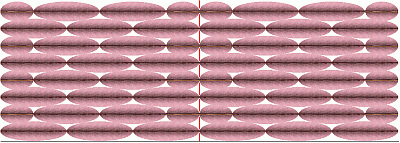 |
|
| Example of partial cross-tie stowage of bags |
| Example of partial cross-tie stowage of bags |
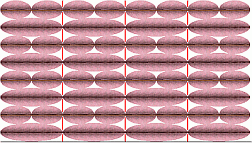 |
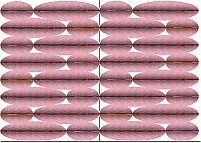 |
Example of partial cross-tie stowage of bags |
| Example of bags cross-tie stowed on a pallet and with shrink-wrap |  |
Chimney-style stowage is extremely well suited for forming pre-slung cargo. With palletized bagged cargo, it is suitable for certain bag sizes. The bags are arranged layer by layer so that they overlap around a cavity. The bags are thus connected to each other. This produces a square footprint, which is very suitable for packing containers if it has the correct dimensions.
 |
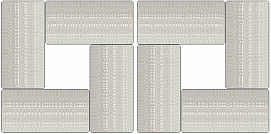 |
||
| Front view | Layer 1, 3, 5, 7 ... | Layer 2, 4, 6, 8 ... | |
| Principle of chimney-style stowage | |||
Nearly all goods can be stacked using the bilge and cantline method or can be stacked and offset, if sufficient interlayer dunnage is laid, allowing the load forces to evenly distributed, and thus preventing point loading.
Soldier stow or soldier packing is used to describe the following arrangement of goods:
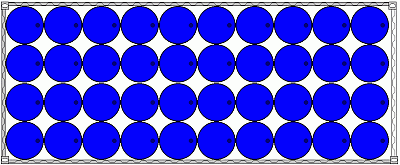 |
|
| Soldier stowage of drums in a 20' box container |
The 20 foot container used has an internal length of 5,895 mm and an internal width of 2,350 mm. The drums packed using soldier stow have an external diameter of 585 mm. Exactly 40 barrels fit into the container using this stowage method.
The same container will also accommodate a total of 160 pails with an external diameter of 290 mm using soldier stow:
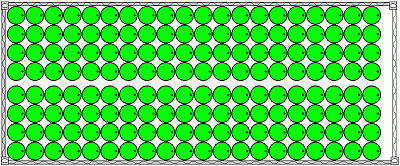 |
|
| Soldier stowage of pails in a 20' box container |
Offset stowage can minimize loss of stowage space, but not always. Offset stowage of the pails with an external diameter of 290 mm, for instance, will allow the container to accommodate a total of 172 pails:
 |
|
| Pails stowed using offset stow in a 20' box container |
The same container will only however accommodate 39 barrels with an external diameter of 585 mm using offset stow - compared with 40 when using soldier stow:
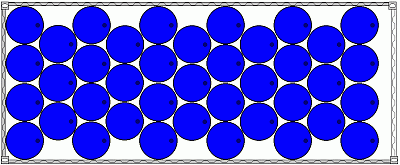 |
|
| Offset stowage of drums in a 20' container |
Vertical bilge and cantline stowage would also be a way of describing offset stowage, but it is not (yet) in use as a technical term. The term "vertical bilge and cantline stowage" of drums (or other cargoes) makes it very clear what is meant, however.
Whether stowage space can be saved depends on the dimensions of the goods and the dimensions of the means of transport. More goods can be stowed if the loading areas are large and/or the load diameters are fairly small. This is only sometimes the case for fairly small spaces and large load diameters.
Alternately raising loads can prevent damage, improve the usage of stowage space or save on load securing materials.
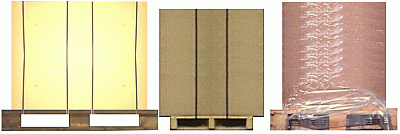 |
|
| Incorrectly loaded pallets make load securing more difficult. |
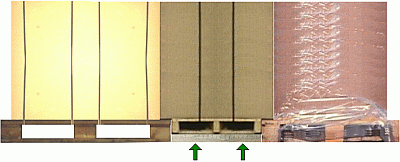 |
|
| Alternately raising loads reduces the outlay for load securing. |
Drums, pails and similar cargo items have construction-related problems. Corrugated drums ride up on the corrugations as a result of transport forces. If closures protrude over the edge of quick lever-closure drums, the drums will snag on the closures. This results in unwanted opening of the drums and/or damage to the drums. Resulting gaps can also lead to further damage. The closures on fiber drums, the handles on drums, pails, cans and other similar containers can cause damage to cargo stored on top of or next to them as a result of high point loading. Alternately raising individual cargo items or groups can reduce the risk of damage. For further information, see the section on drum loads and mixed loads.
Manual interleaving of I beams and U profiles is rarely practiced. "Interleaved" loads are often delivered as a bundle, however, and then stacked using normal stowage anchors and squared lumber anchors.
 |
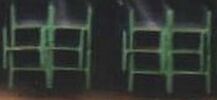 |
Nested stowage reduces loss of stowage space or can be used to create level cargo surfaces for access with fork-lift trucks. Some variants have their own names. Manually stowing on site is also becoming increasingly rare for this method, as it is growing much more common for cargo to be stowed in bundles beforehand at the factory.
 |
|
| Nested I beams |
Face stow refers to the loading of coils, rolls etc., with their axis oriented parallel to the longitudinal axis of the skid or means of transport.
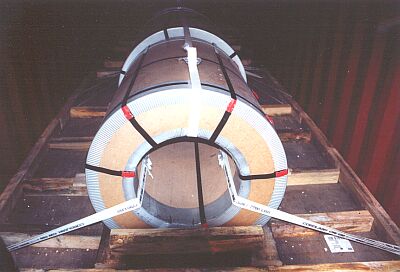 |
|
| Face stow of coils in a container |
Braiding involves placing ring-shaped loads, such as tires, wire rod coils with a short winding axis etc. in the core of other ring-shaped loads. Braiding has lost its importance through the use of special vehicles and the now common practice of transporting smaller batches in containers. The method is still used, however, on complete loads or fairly large batches.
 |
|
| Braiding of car tires in a 20' container |